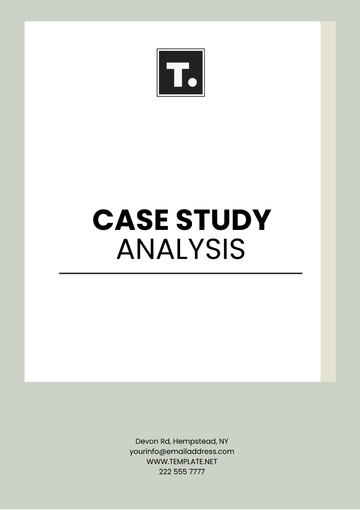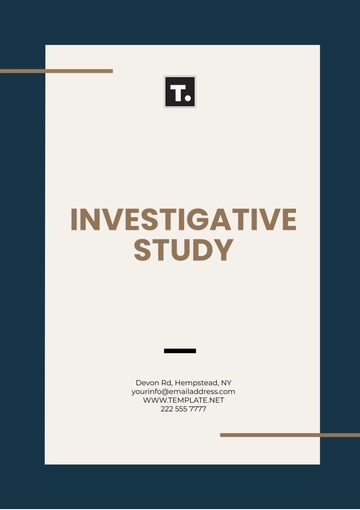Free Clinical Case Study

I. Introduction
In this Clinical Case Study, we delve into the perplexing presentation of a 25-year-old male patient admitted to the [Your Company Name] with a persistent fever of unknown origin (FUO). Despite extensive diagnostic workup and empirical treatments, the underlying cause remained elusive. The case highlights the challenges in diagnosing and managing FUO, emphasizing the importance of a systematic approach and interdisciplinary collaboration in such complex scenarios.
The patient, Mr. Philip Mitchell, initially presented to the emergency department with a fever of 39°C, accompanied by chills, malaise, and non-specific abdominal discomfort. He reported no recent travel history, exposure to sick contacts, or significant medical history. Initial laboratory investigations revealed leukocytosis with neutrophil predominance and elevated acute-phase reactants. Blood cultures were obtained, and broad-spectrum antibiotics were initiated pending further evaluation.
II. Clinical Presentation and Evaluation
A. Presenting Symptoms and History
Fever: Persistent, with spikes reaching 39-40°C.
Chills: Frequent episodes accompanying fever spikes.
Malaise: Profound sense of weakness and fatigue.
Abdominal Discomfort: Vague, diffuse discomfort without localized tenderness.
The patient denied respiratory, genitourinary, or dermatological symptoms. Detailed history-taking revealed no recent travel, exposure to animals, or high-risk behaviors. Family history was unremarkable for hereditary conditions or infectious diseases. Physical examination demonstrated tachycardia, but was otherwise unremarkable, with no localized signs of infection or organomegaly.
B. Diagnostic Workup
Laboratory Investigations:
Complete Blood Count (CBC): Showed leukocytosis with neutrophil predominance.
Comprehensive Metabolic Panel (CMP): Within normal limits.
Erythrocyte Sedimentation Rate (ESR) and C-Reactive Protein (CRP): Elevated.
Microbiological Studies:
Blood Cultures: Negative for bacterial growth.
Urinalysis: Unremarkable.
Sputum Culture: Negative for respiratory pathogens.
Imaging Studies:
Chest X-ray: Normal findings.
Abdominal Ultrasound: No evidence of intra-abdominal pathology.
Despite extensive investigations, the cause of the persistent fever remained elusive, prompting further specialized evaluations and consultations.
III. Differential Diagnosis
A. Infectious Etiologies
Bacterial Infections:
Endocarditis
Intra-abdominal Abscess
Tuberculosis
Viral Infections:
Infectious Mononucleosis
Cytomegalovirus (CMV) Infection
Epstein-Barr Virus (EBV) Infection
B. Non-Infectious Etiologies
Autoimmune Disorders:
Systemic Lupus Erythematosus (SLE)
Rheumatoid Arthritis (RA)
Malignancies:
Lymphoma
Leukemia
Drug-Induced Fever:
Antibiotics
Anticonvulsants
IV. Conclusion
Despite exhaustive investigations and consultations with various specialties, the etiology of the patient's persistent fever remained enigmatic. The case underscores the diagnostic challenges associated with FUO and highlights the need for a systematic approach, interdisciplinary collaboration, and consideration of rare and atypical presentations.
Further, specialized testing and longitudinal follow-up are warranted to unravel the diagnostic puzzle and optimize patient care. This Clinical Case Study contributes to medical knowledge by emphasizing the complexities involved in diagnosing and managing FUO, ultimately striving to improve patient outcomes and enhance healthcare professionals' understanding of such challenging clinical scenarios.
Prepared by:
Dr. [Your Name]
Contact Details:
[Your Company Email]
[Your Company Number]
[Your Company Name]
- 100% Customizable, free editor
- Access 1 Million+ Templates, photo’s & graphics
- Download or share as a template
- Click and replace photos, graphics, text, backgrounds
- Resize, crop, AI write & more
- Access advanced editor
Clinical Case Study Template from Template.net. This meticulously crafted template, offered by Template.net, empowers you to present your findings with precision and clarity. Tailor your reports effortlessly with its customizable features, ensuring your unique insights shine through. Downloadable and printable, this template provides the flexibility you need to showcase your work professionally.





























